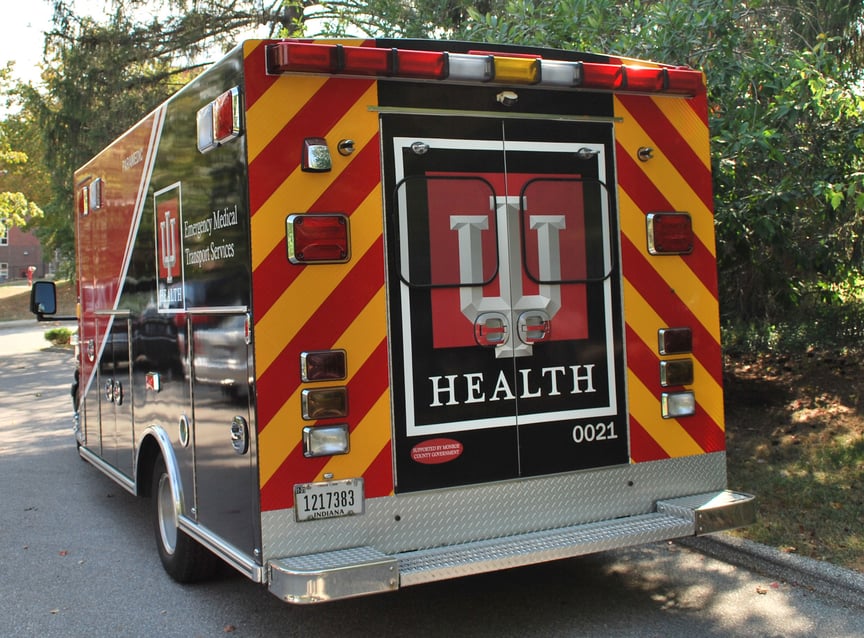4 Must-have Data Points for Dispatch-Billing Alignment and Maximum Reimbursement
Bloomington Hospital EMS Tried a Competitor of Road Safety for 1 Year; Find Out What Happened
Bloomington Hospital EMS was an early adopter of Road Safety, starting with Road Safety 3000
Was this information valuable?

Bloomington Hospital EMS was an early adopter of Road Safety, starting with Road Safety 3000. I’ve been the system administrator, and even developed training for our staff as well as other agencies in the United States. We found the driver performance feedback system was beneficial to our agency in many ways. Reports were easy to run. And even more importantly, the feedback it provided helped us protect our employees.
Driver Feedback in Action
We have countless examples of how Road Safety has proved beneficial to Bloomington Hospital EMS. Here are two examples:
- One of our ambulances was accused of speeding through a school zone by a private citizen. The individual contacted us to file a complaint. We assured them that we would review our onboard computer data and provide the appropriate follow up. We went back and pulled a report from the ambulance from the data history, and the report proved that the driver wasn’t speeding at all. We contacted the complainant and reviewed the findings with them. It was informative for them, and they were appreciative of the data and accountability that we hold our staff to. And, our staff appreciated the fact that they were cleared based on data.
- In 2002, we had a major ambulance accident at an intersection close to a hospital. We were sued for $750,000. Experts said they believed the ambulance went into the intersection at 28 miles per hour through a red light. There were even witnesses who said they thought the ambulance blazed through the intersections. But perception can be deceiving; our reports showed the ambulance, which was leaving from one of our maintenance garages around the corner, had slowed to four miles per hour at the intersection. Now, in this instance, perhaps we were going slightly faster than our policy, but it was nowhere near the 28 miles per hour in the original lawsuit. We were able to settle for a fraction of the amount requested.
Not only did Road Safety help us protect our drivers in those two examples, we used the data in the reports to develop new driver policies. Last but not least, we also spent less on maintenance, insurance and repairs for our fleet.

Trial & Error Led Us Back to Road Safety
Road Safety did everything we needed it to do. So why, in 2016, did we move over to a competitor system? We thought we couldn’t afford to upgrade to Road Safety 4000, so we went with a cheaper option. It was clear from the beginning, the new system was not superior to our Road Safety system. It operated as a monitoring system, not a driver feedback system that would help us take preventative measures. We had issues with log ins. Performance reports wouldn’t show up. The tool was inconsistent. The functionality was just not there. In an accident, you need the second by second activity of the ambulance, which Road Safety provides. And most importantly, it wasn’t designed for ambulances, it was designed for school buses.
Our own drivers started requesting that we get Road Safety back. ZOLL was willing to work with us to get the installations done this fall so we could go live by our target date of January 2018. And now with Road Safety 4000, we were able to pay monthly, which ends up being less per month per vehicle. We took all of this information back to management, and they approved it. Equipping our fleet of 30 vehicles equates to the cost of one ambulance. If we can prevent an accident with total loss and prevent injuries, we are money ahead.
In conclusion, I have 18 years of experience with Road Safety as an administrator and Paramedic. I have used the system for accident review, court cases, complaints and driver accountability. I believe in the system and the staff believes in the system. The immediate driver feedback is important; if managed, the system will ensure the safe operation of the ambulance fleet. In the long run, it’s dollars saved, and the safest thing we can do for staff, community and patients.
Related Posts
How EMS Agencies Can Reframe Need and Refocus Resources With Geospatial Analytics
How To Minimize Radio Chatter and Reduce Guesswork With Smarter Dispatch Resource Management
ZOLL Pulse Blog
Subscribe to our blog and receive quality content that makes your job as an EMS & fire, hospital, or AR professional easier.
ZOLL Pulse Blog
Subscribe to our blog and receive quality content that makes your job as an EMS, fire, hospital, or AR professional easier.




